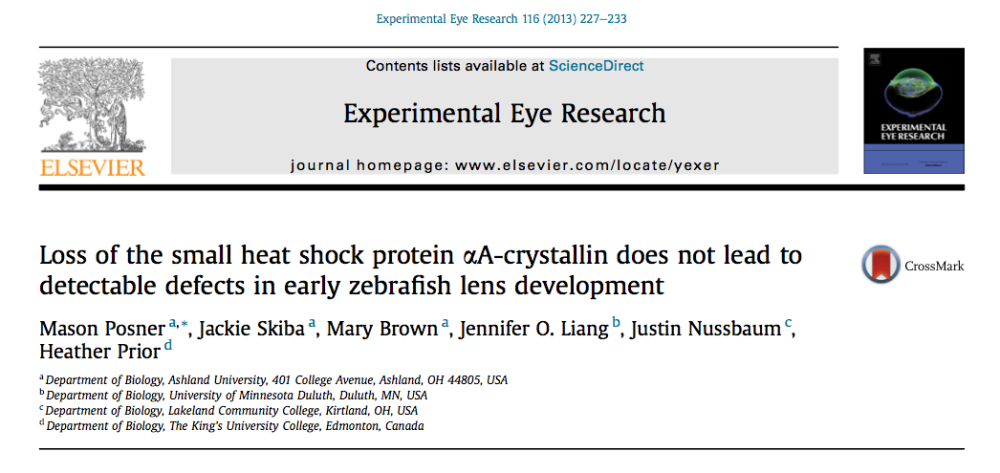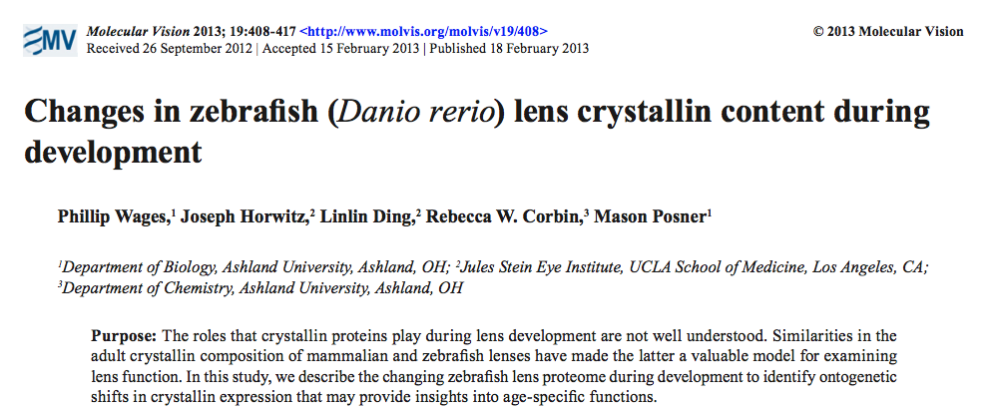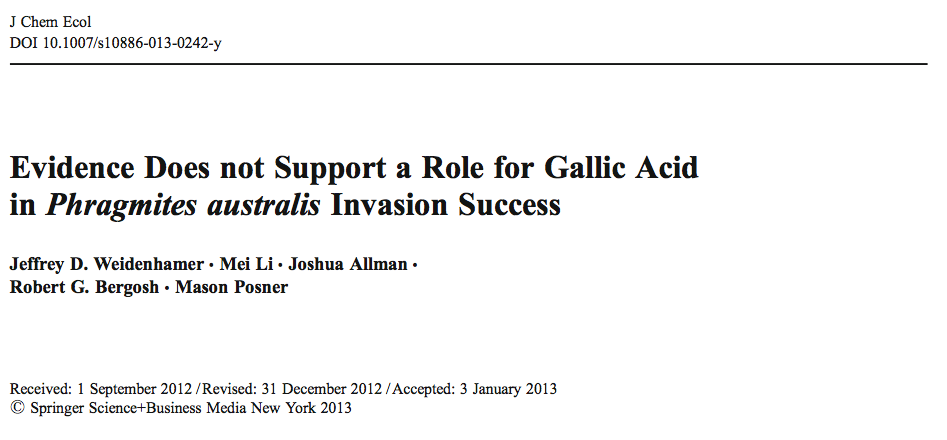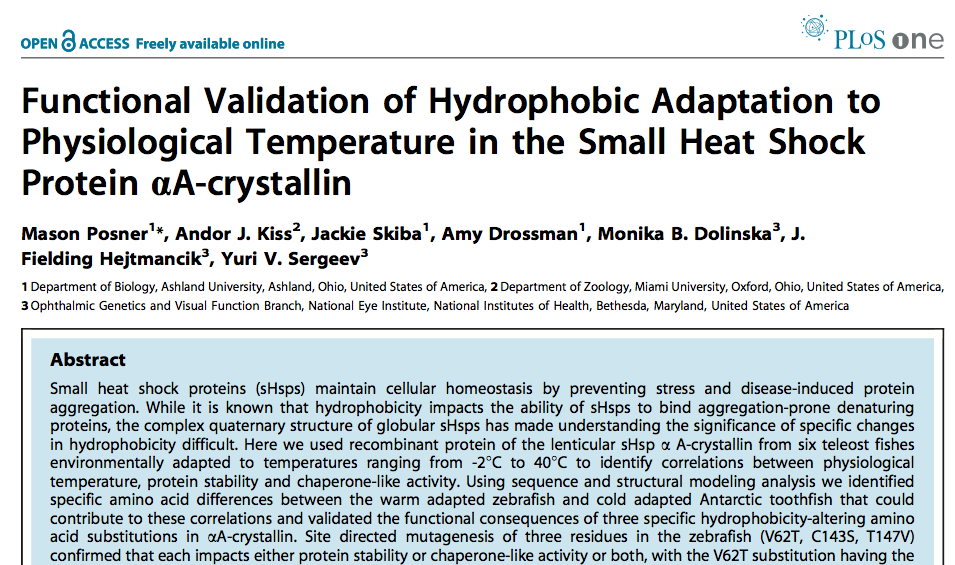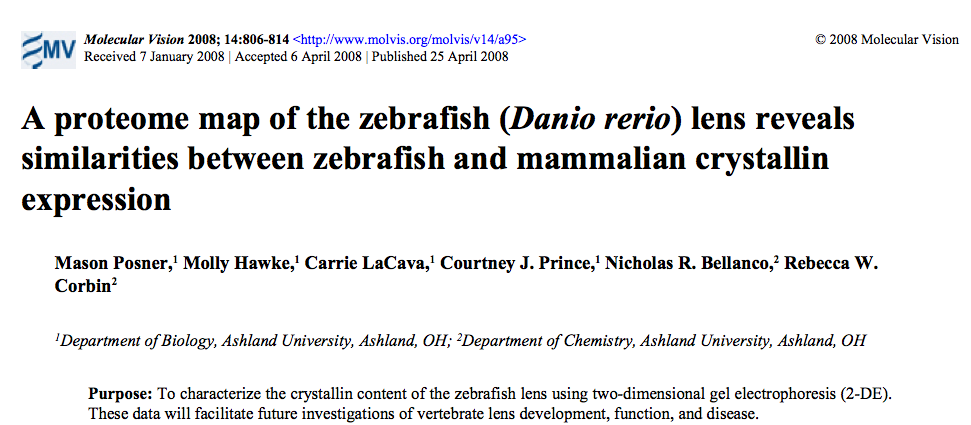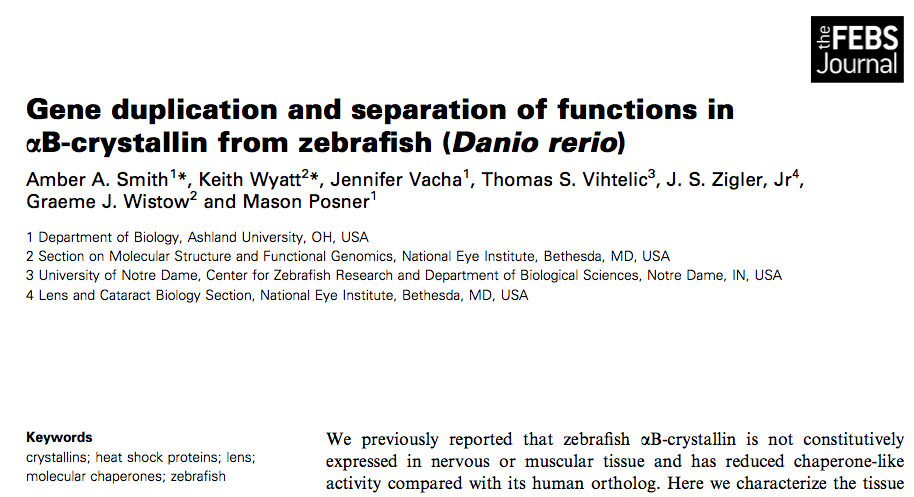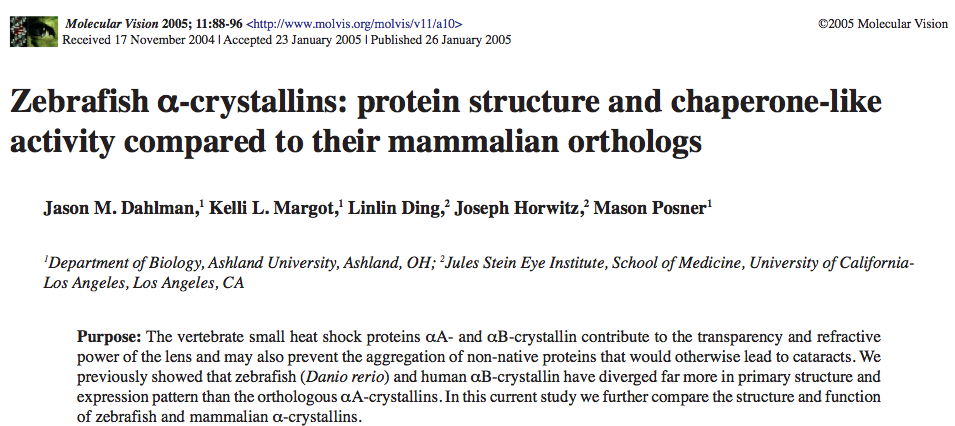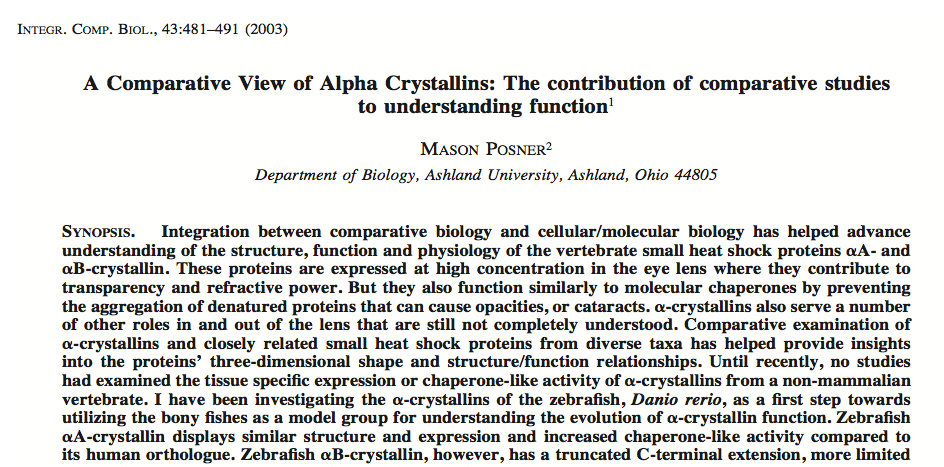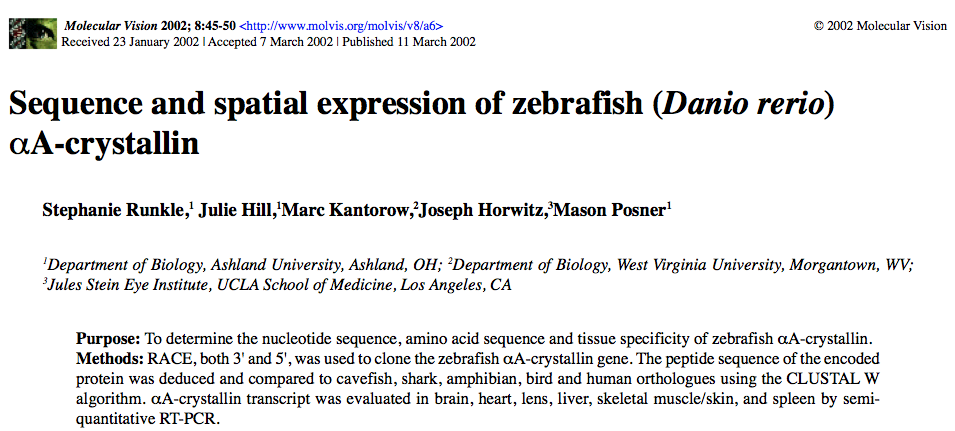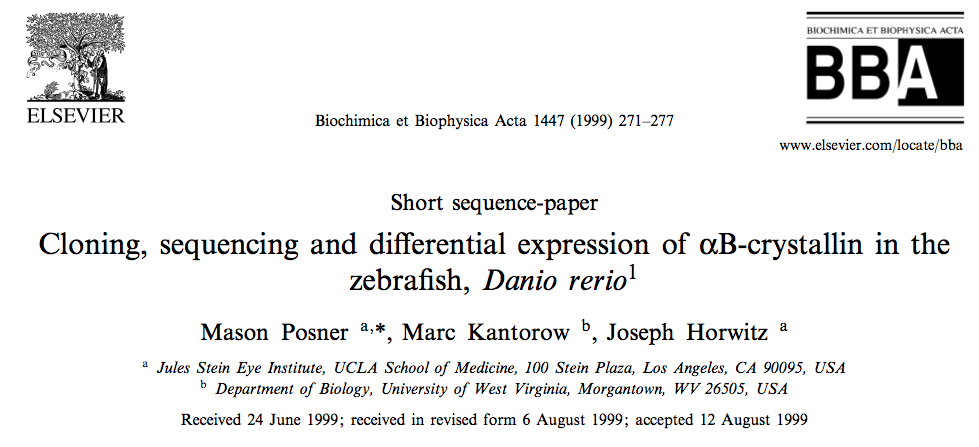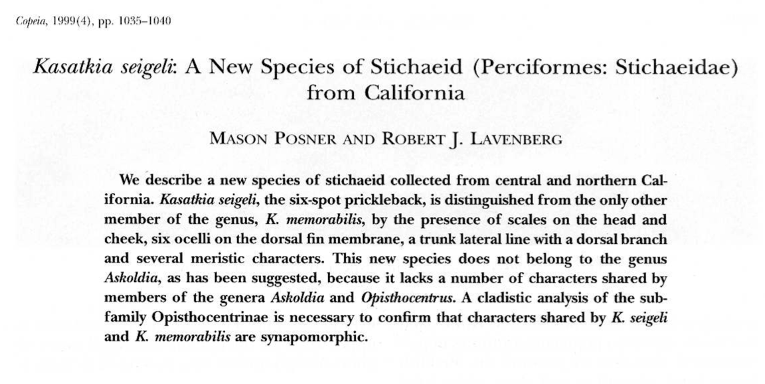Presentations
Our lab members present their research at national and regional meetings, and at an annual student symposium hosted by the College of Arts and Sciences at Ashland University. You can find us in action on this page. Lab publications and grant funding are highlighted further down.
Research Funding
Our research on zebrafish lens crystallin function has been funded by the National Eye Institute of the National Institutes of Health using their AREA grant funding for undergraduate focused research. We have received over $400,000 in funding from the NEI since 2001.
Publications
Click on each of the publications to find an online full-text or PDF version. You can also view our citations on my Google Scholar and ResearchGate pages.
PLoS One 2012
This study used a novel comparative approach with six fish species living at diverse temperatures from the Antarctic to estuaries in Florida to identify specific amino acid changes in alpha A-crystallin that modify its ability to prevent protein aggregation. This study was reported on by the Journal of Experimental Biology.
The FEBS Journal 2006
The one where we show that zebrafish have two alpha B-crystallins, unlike all other vertebrates examined to date. These two versions have diverged in function and expression pattern, providing a unique opportunity to dissect the many roles of human alpha B-crystallin and better determine what it does in the lens.
Molecular Vision 2005
The first analysis of anti-aggregation chaperone activity of zebrafish alpha crystallins. We showed that stability and chaperone activity were adjusted to the lower physiological temperature of the zebrafish, suggesting that these proteins evolve to maintain their function at different temperatures.
Copeia 1999
My graduate training in the marine biology program at USC took place in the ichthyology section of the Los Angeles County Natural History Museum. The lab was focused on fish evolutionary relationships and ecology. In addition to my dissertation work on fish lens biochemistry I conducted this side project to describe an intertidal fish from California.

